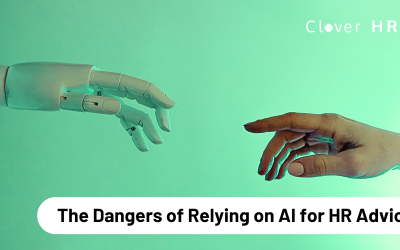On average, a regular employee spends a third of each day in their workplace. It therefore stands to reason that the condition of the physical working environment can be enormously impactful on their job satisfaction, motivation, patterns of interaction and overall wellbeing – specifically when it comes to aspects such as layout, furniture, lighting, temperature and the inclusion of nature.
Creating a positive work environment can pay dividends for businesses looking to improve productivity, efficiency and happiness in their offices. If you’re looking for ideas to improve workplace culture, the human resources experts at Clover HR have been looking into the best ways to create a more comfortable work environment. Here’s what we found.
Why a Comfortable Work Environment Matters
The workplace environment that organisations create for their employees to work in – often their office space – is reported to have a serious role in shaping of employees. Trying to carry out highly pressured roles and complete time-sensitive tasks in a dark, cramped and unwelcoming environment is highly likely to increase an employee’s stress and anxiety levels.
A positive work environment can improve morale, productivity and employee retention, having significant forward benefits on the efficiency of a business and its ability to compete in an ever-more crowded global marketplace. From lighting to layout and beyond, let’s look at some fundamental ideas to improve workplace atmosphere and increase happiness in your workforce.
Key Elements of a Comfortable Work Environment
Lighting and Colour
Bright and open spaces with access to lots of natural light and air support employees in feeling more relaxed and connected to the outside world during working hours. Access to fresh air benefits stress relief and is vital for a positive work environment. Where little access to natural light is possible, natural colours and furnishings such as plants can provide effective results.
Layout and Space
Flexible spaces and open-plan offices encourage a more sociable environment and workplace culture, ensuring no employee feels cut off or isolated from their colleagues and team. This type of office plan also encourages communication and nurtures inter-departmental relationships, reducing instances of poor communication and individuals trying to deal with problems alone.
Temperature Control
Poorly ventilated spaces and poor temperature control can cause employees to feel uncomfortable, miserable and even physically sick at work, which in turn affects both productivity and employee wellbeing. Providing desk fans, creating heating zones and allowing flexible seating arrangements can help address individual temperature preferences, ensuring a more comfortable workspace.
Ergonomic Furniture
Allowing employees flexibility in their office furniture can improve attendance, job satisfaction and performance. Quality of furniture and adjustability helps to prevent injuries caused by sedentary working. Adjustability of equipment, as well as different working options, can contribute significantly to the creation of a more comfortable work environment.
Break Zones for Relaxation
One of the leading causes of anxiety and stress at work is that many employees feel they are unable to get away from their desks and overall office environment. Giving employees somewhere safe within the office to step away to when the stresses of work feel like too much is essential for reducing workplace stress and encouraging a positive work environment.
Top 5 Tips for an Effective Break Room
- Comfortable Seating: Provide soft seating options like couches or armchairs to ensure employees feel relaxed during their breaks. Comfort encourages more effective downtime.
- Healthy Refreshments: Stock the break area with healthy snacks, tea, coffee and even hydration stations. Offering nutritious options supports physical and mental wellness.
- Engaging Activities: Include activities like books, puzzles or even games to help employees unwind and recharge. Fun distractions can alleviate stress and spark creativity.
- Calming Decor: Use plants, neutral colours and artwork to create a soothing atmosphere that contrasts with high-energy work areas. A calming environment fosters relaxation.
- Tech-Free Spaces: Encourage employees to disconnect by suggesting the break zone be a no-work, no-tech area. This reinforces its purpose as a stress-free retreat from daily tasks.
Employee Wellbeing Success in a Positive Work Environment
At Clover HR, we understand the importance of employee wellbeing in business success. With years of experience and a range of tailored services – from wellbeing workshops to mental health awareness training and our acclaimed Employee Assistance Programme (EAP) – we’re here to support your team every step of the way.
Call us now on 03301 756 601, fill out our contact form or download our EAP brochure to discover how we can help minimise stress, reduce absenteeism and boost productivity – a positive work environment and the success it brings are just a few steps away.


